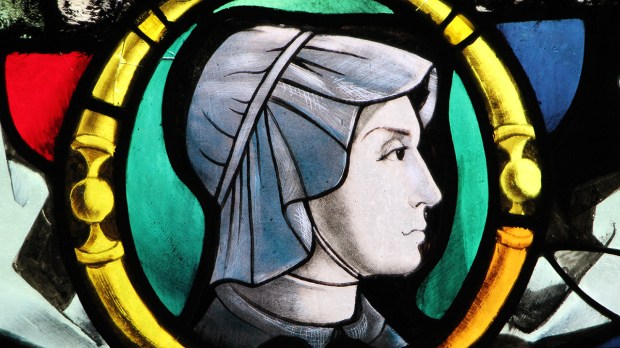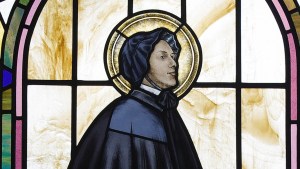If 2021 wasn’t a stellar year for you — and let’s face it, that’s most of us — you may want to begin the new year by reading a biography of Elizabeth Ann Bayley Seton — America’s first native-born canonized saint — for a little perspective. In the midst of one of her many trials, she wisely advised: “It sometimes lessens personal sorrow to compare our condition with the case of others.”
The wife, mother, widow, socialite, convert, loyal friend, educator, musician, caregiver, volunteer, and religious founder of the Sisters of Charity was fortunate when any year of her life didn’t involve loss, death, illness, financial stress, heartbreak, moving, and all manner of hardships — including the trials she faced when she converted to the Catholic faith.
There is a lot this homegrown saint can teach us, but here are three lessons from her life that can help make your new year a little happier and holier:
1) Keep following the star
St. Elizabeth Ann Seton’s feast day is celebrated on January 4 — except for years when the feast of Epiphany trumps it. Elizabeth wouldn’t have minded this one bit, however, as Epiphany inspired a significant turning point in her conversion from a devout and upstanding member of the fashionable Trinity Episcopal Church in New York to a card-carrying Roman Catholic — something dignified ladies simply didn’t do in the early 1800s.
In fact, Catholics of that era were regarded as a public nuisance and the “offscourings of the people.” Catholicism was considered the religion of the immigrants, who often lived in tenement squalor and were considered shabby and strange. To Elizabeth Ann Seton’s friends and family, converting to Catholicism was unheard of — scandalous and unbecoming. She was pressured in both subtle and not-so-subtle ways to doubt her newfound convictions and remain in the church of her family.
But after some time of discernment, and being distracted with duties like tending to her children sick with whooping cough, Elizabeth found herself — on New Year’s Day of 1805 — reaching for a book by the French Jesuit and famous preacher Louis Bourdaloue. Reading his sermon on Epiphany, she was struck by the quest of the wise men and once again faced the question of where the true church was. “The inference that when we no longer discern the Star of Faith we must seek it where only it is to be found, ‘with the depositors of his Word,’ seemed to her too plain to be ignored,” wrote her biographer, Annabelle Melville.
“Following the star” was a consolation to Elizabeth; she trusted that God would ultimately reveal the truth to her and lead her to where she should go, even when she was confused and discouraged. Epiphany, to Elizabeth, always remained a special feast and meaningful event to contemplate. As she wrote to her friend Amabilia Filicchi in Italy after reading the Epiphany sermon, “Alas, where is my star? … I seek but God and his church and expect to find my peace in them.” And she did.
2) Look up!
Perhaps what made it easier for Elizabeth to always follow the star was the fact that she was constantly looking up. She was even fond of saying it: “Look up and be thankful for the good that yet remains. Look up at the blue heavens and love him!”
No doubt “looking up” became a practice Elizabeth had to cultivate in order to overcome discouragement and self-pity. She lost her mother at the age of 2 and by the age of 29 had lost her father and father-in-law (she was very close to both of them), many dear friends, and even her beloved husband. (She would go on to lose more close friends, family members and even some of her children before her own death at the age of 47.)
She went from being a member of a socially upstanding “family of means” to a struggling widow trying to provide for her five children and other dependents. She faced epidemics, frightening sea voyages, uncertainties and misunderstandings — all of which could easily have sent her to the brink of despair.
For Elizabeth, “looking up” was a simple gesture of body and soul, reminding her of who was the true Provider, and where she would find her ultimate home: in heaven. At a time when even a sore throat could spell an early demise and women died often in childbirth, Elizabeth was well acquainted with the fragility of life, and suffering was consistently knocking on her door. Yet she was always looking up, in hope and trust that her life was in God’s hands and also in his promises.
3) Surrender to God’s will
A central theme in Seton’s entire life was the pursuit and acceptance of God’s will. She once wrote, “God has given me a great deal to do and I have always and hoped always to prefer his will to every wish of my own.”
And Elizabeth always had a great deal to do.
In addition to her own children, she took in her husband William’s younger siblings when his father died. When William took over his father’s business, she kept all the books and helped run the business. She was active in her church, volunteered in various capacities, kept up a lot correspondence and wrote prolifically. Later, as a no-longer-wealthy widow, she had even more on her plate, yet she managed to found a new religious community — the Sisters of Charity, who educated the children of so many Catholic immigrants, in Emmitsburg, Maryland.
Elizabeth sought God’s will in the Scriptures, and later in the sacramental life of the Church, but most of all in her circumstances — the everyday struggles, triumphs, changes and trials. Her openness to the will of God led to her sanctity, and she was canonized as America’s first native-born saint on September 14, 1975, by Pope Paul VI.
Perhaps the best way to sum up these three practices for a happier new year is this: Hold on to epiphany! Look up, and keep following the star, and you will find God’s will for you in 2017 — just as Saint Elizabeth Ann Seton did every new year that she faced.
Most quotes above taken from the biography Elizabeth Bayley Seton, written by Annabelle Melville and edited by Betty Ann McNeil, DC. More information about St. Elizabeth Ann Seton can be found atThe National Shrine of Elizabeth Ann Seton.


